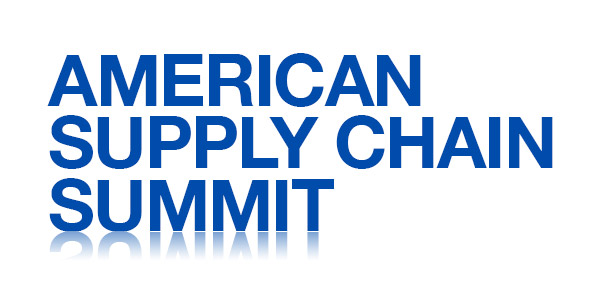Lessons from supply chain leaders
At last week's American Supply Chain Summit, leaders discussed the importance of people and resilience.

Judd Aschenbrand, my former research director, loved reading the open-ended comments in research reports. They were usually long and all over the map, but if you studied them, he used to say, themes emerge that you might not see in the survey responses. He likened it to the church confessional.
Last week, I went to church in Dallas at the American Supply Chain Summit. There, I had the opportunity to moderate fireside chats with Patricia Marseille, a Disney supply chain executive, and Rochelle Savel, a supply chain executive at Corning.
The ostensible topic for both discussions was leadership, but as it played out the underlying topics were people and resilience, and the two were interrelated with one another.
In fact, people and resilience were the themes of most of the presentations and most of the questions from the audience. A for instance: Roxanne Flanagan, Walgreen’s chief supply chain officer, included a video on how Walgreen’s has integrated people with disabilities, including autism, into its distribution center workforce for some 15 years. Another example: Disney’s Marseille challenged everyone in the room beyond the usual talent pool to expand supply chain talent: She hired a former journalist with no supply chain experience on her team because he was used to digging into the facts and good with documents; she also hired a professional gamer, who brought new technology skills to the job. As Judd would say, it was the confessional.
In fact, I was particularly struck by two interactions. During a presentation by Mark Holloway, the global supply chain leader for Goodyear, Elinor Riggs, a technology VP for J&J, asked how Goodyear is tackling the war for talent given its location in Akron, Ohio. She made the point that supply chain organizations are often located far from sexier locations like Silicon Valley, Cambridge and Austin. Holloway’s response, and it was one that I heard from other presenters, was that it comes down to creating a culture that attracts people and makes them stick. Another presenter made a point of saying that one wouldn’t wish for a pandemic, but the last two plus years have moved internal supply chain discussions and initiatives from technology to people.
Maybe we’ve all come to realize that besides all of the remarkable technologies entering our space, from AI and Machine Learning to robotics, autonomous vehicles and tools for visibility, supply chains are nowhere near lights out. We still rely on people. The trick is identifying those tasks that can be automated, the technologies that can automate them and then upskilling the people who used to be responsible for the mundane into more responsible and engaging positions.
Now, emerging technologies weren’t left out of the conversation. During our chat, Corning’s Savel noted that a global visibility platform that Corning had implemented prior to the pandemic, along with a logistics control tower, were keys to the company’s ability to navigate through disruptions, shutdowns and issues with suppliers. But she too discussed steps Corning took to enable communication and conversations while everyone was working from home. As a shameless plug for my own upcoming event, digital transformation and the people enabling it will be on display at the NextGen Supply Chain Conference, October 17 - 19, at the Chicago Athletic Association hotel. I hope to see you there.
Going forward, it strikes me that balancing the two will be the key to supply chain success. NextGen technologies are more important than ever to competing in an increasingly digital age; those organizations that are slow to step up to the plate will probably be left behind. But, digital transformation won’t work if we don’t bring our people along on the journey.
*** *** ***
A little off point, but we’ve heard story after story about unexpected spikes in demand as we come out of the pandemic. Here’s one I’d never considered: Shauna Gamble, the chief supply chain officer for the Canadian jet manufacturer Bombardier, said they were caught off guard because they hadn’t realized how many new billionaires had been created by the stock market gains of the last few years. Once you become a billionaire, she said, you no longer want to fly coach – or even first class. I’d never considered following the billionaire index as a predictor of demand.

Article Topics
American Supply Chain Summit News & Resources
Lessons from supply chain leadersLatest in Materials Handling
ASME Foundation wins grant for technical workforce development The (Not So) Secret Weapons: How Key Cabinets and Asset Management Lockers Are Changing Supply Chain Operations MODEX C-Suite Interview with Harold Vanasse: The perfect blend of automation and sustainability Consultant and industry leader John M. Hill passes on at age 86 Registration open for Pack Expo International 2024 Walmart chooses Swisslog AS/RS and software for third milk processing facility NetLogistik partners with Vuzix subsidiary Moviynt to offer mobility solutions for warehouses More Materials HandlingAbout the Author
Subscribe to Materials Handling Magazine

Find out what the world's most innovative companies are doing to improve productivity in their plants and distribution centers.
Start your FREE subscription today.
April 2024 Modern Materials Handling

Latest Resources










